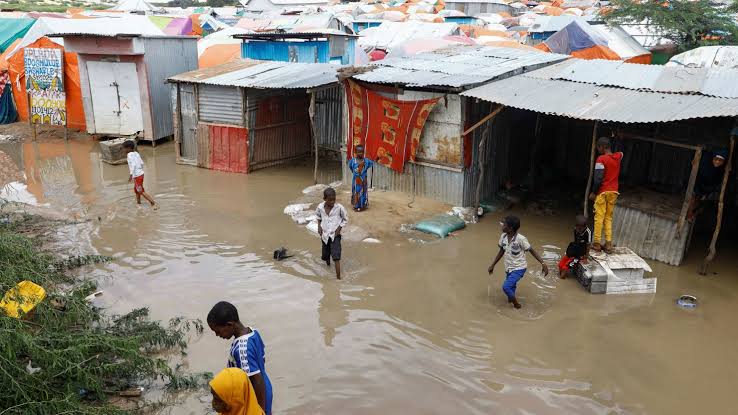Eastern Africa is currently grappling with the aftermath of heavy rainfall, which has led to flooding in Kenya, Tanzania, and Burundi. The region has been hit hard, with approximately 100,000 individuals in each country displaced or otherwise affected. The devastating impact of the floods is evident, with reports of 32 deaths in Kenya and 58 in Tanzania, alongside substantial damage to farmland and infrastructure.
Of particular concern is the potential for outbreaks of waterborne diseases due to large areas of standing water. The situation in the Kenyan capital, Nairobi, is especially dire. While the city typically receives around 150mm of rain in April, this year has seen an estimated 200-300mm, with some unofficial reports indicating even higher levels. The resulting flooding has forced many residents to seek refuge on their rooftops, where they have been stranded, some even overnight.

Experts attribute the increased rainfall to the Indian Ocean Dipole (IOD), a phenomenon similar to the more widely known El Niño. Currently, the IOD is in a positive phase, leading to warmer waters moving into the western parts of the Indian Ocean, thereby increasing rainfall in eastern Africa. This effect is exacerbated by the simultaneous occurrence of a powerful El Niño event, which began last June and is now winding down.
In contrast, Europe has experienced a significant shift in weather patterns. After a warm start to April, temperatures plummeted well below normal across much of the continent, except for Iberia and the eastern Mediterranean. This sudden change was driven by a large area of high pressure that developed over north-western and western Europe, allowing colder air to sweep southwards. The resulting frosts have had a notable impact on agriculture, with severe damage reported in some regions.
Looking ahead, central Europe is expected to experience a gradual warming trend next week, with temperatures in Germany and Poland possibly reaching close to 30°C. However, cooler conditions are forecasted to persist in Spain and southern France. Despite these fluctuations, efforts are underway to protect vulnerable crops from further frost damage.
In summary, while eastern Africa copes with the aftermath of heavy rainfall and flooding, Europe grapples with unseasonably cold temperatures. These contrasting weather patterns underscore the urgent need for adaptive measures to mitigate the impact of extreme weather events, highlighting the importance of global climate action.

Leave a Reply
You must be logged in to post a comment.